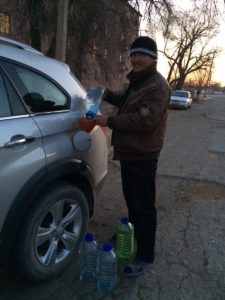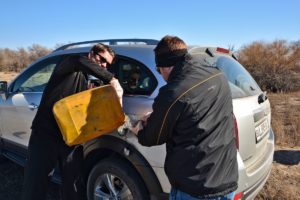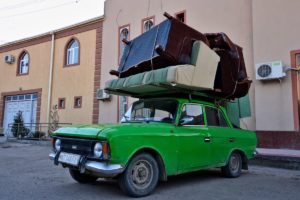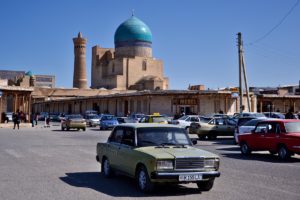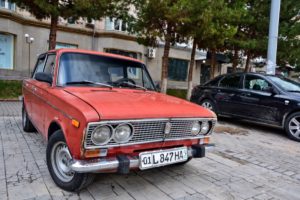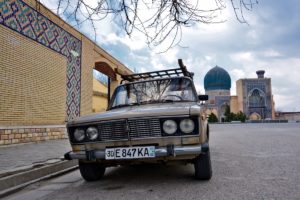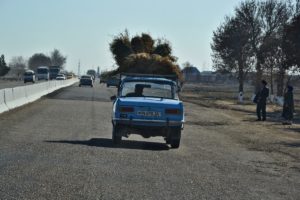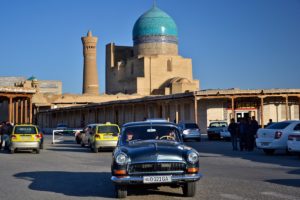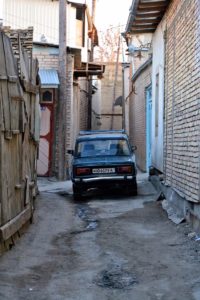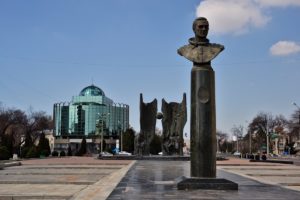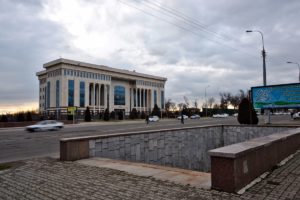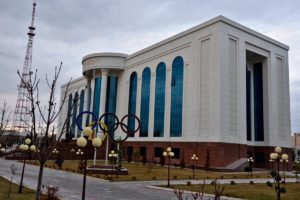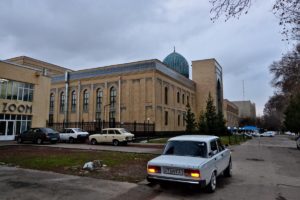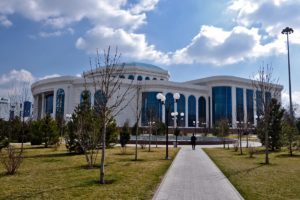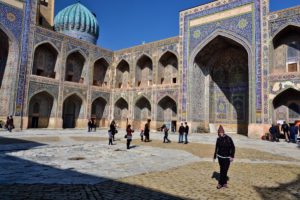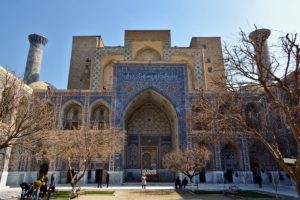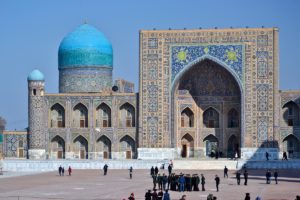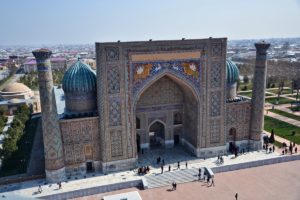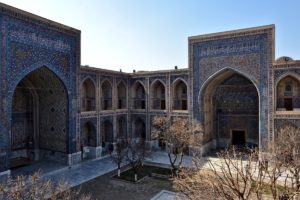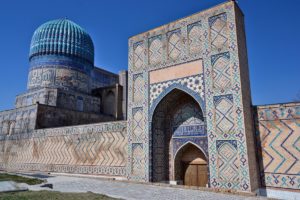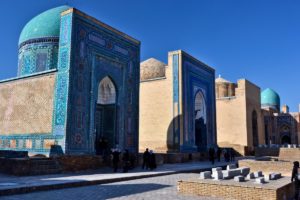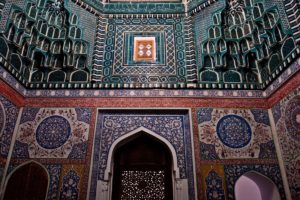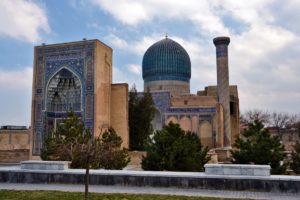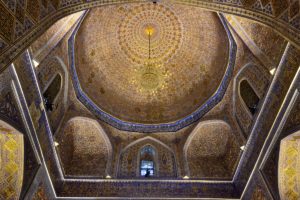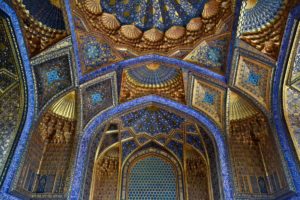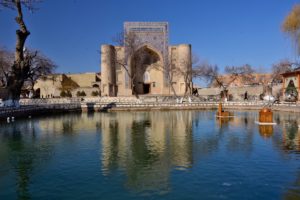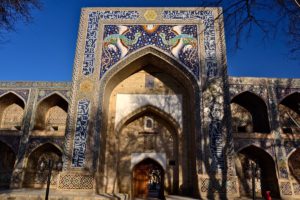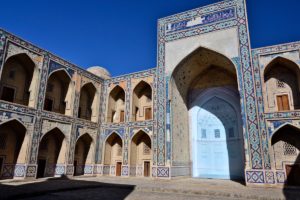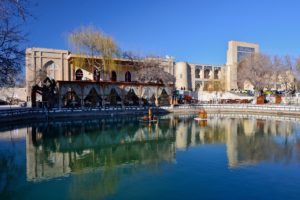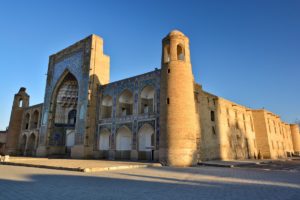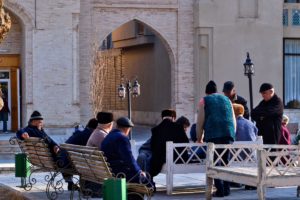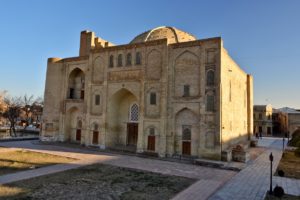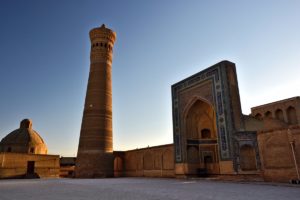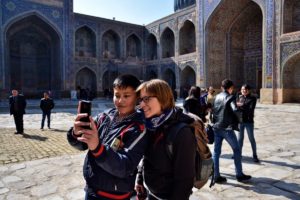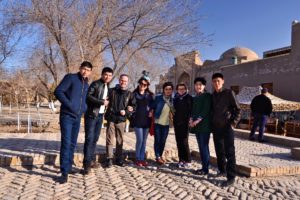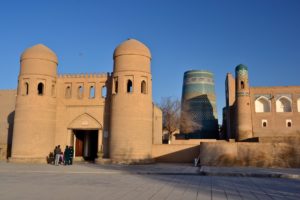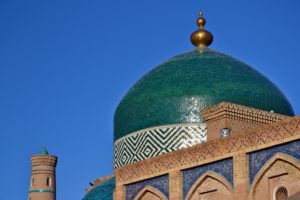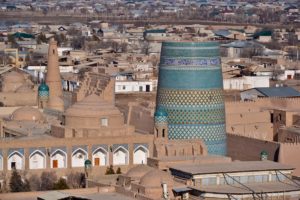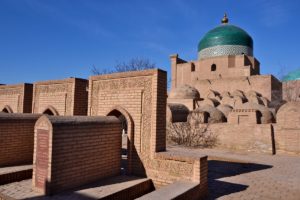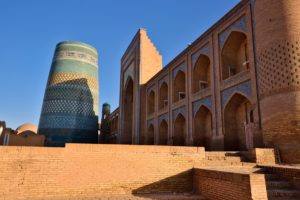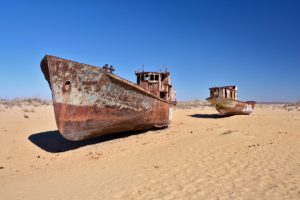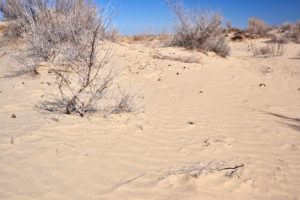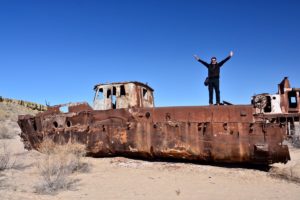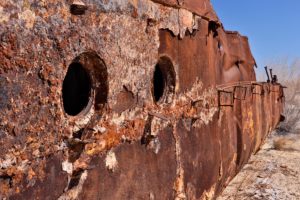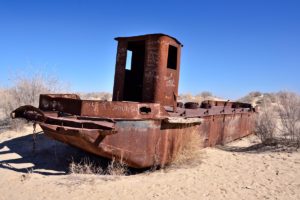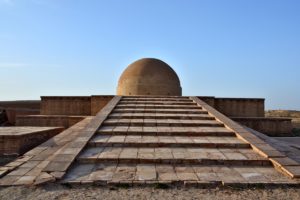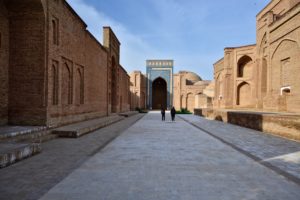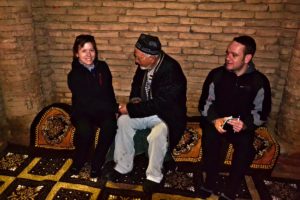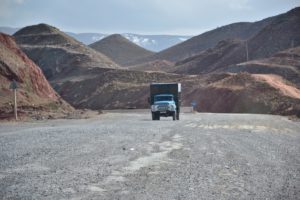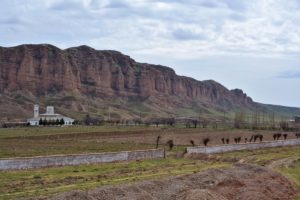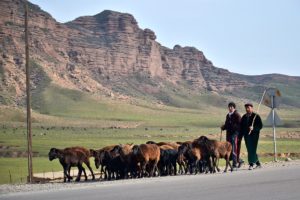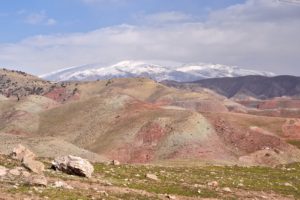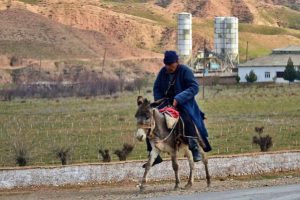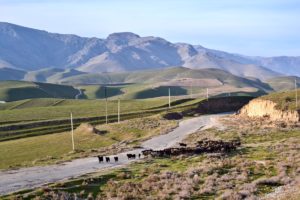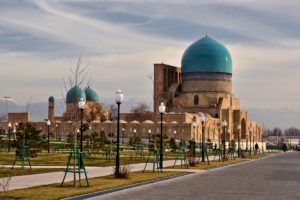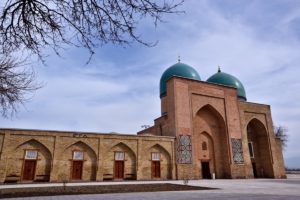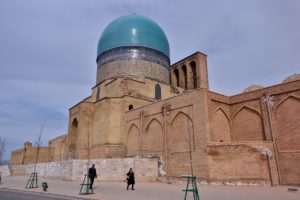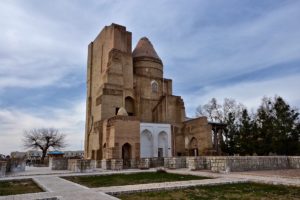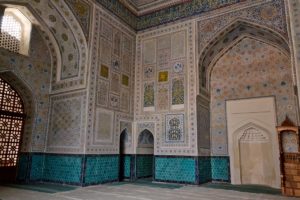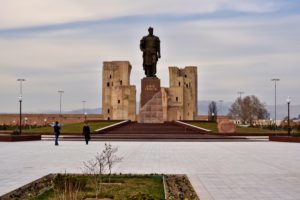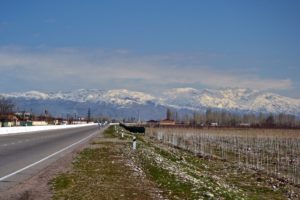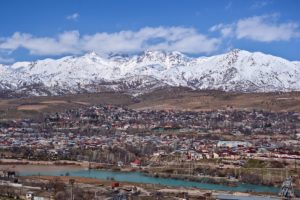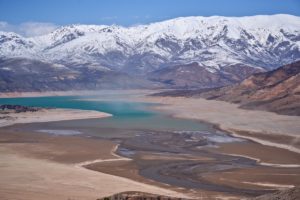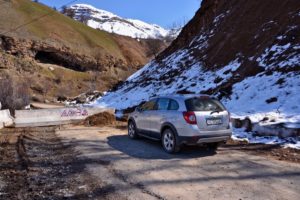
Uzbekistan Travel Tips
How we got to Uzbekistan
Our exploration of Uzbekistan started already at the check-in counter at the airport in Bangkok. We were quite early at the check-in counter since online check-in is not possible when flying with Uzbekistan Airways. Consequently, only a few people were in front of us in the queue in front of the check-in counter. However, the Uzbek people did not care if somebody is already queuing up. Consequently, they opened the barrier and pushed-in somewhere in the front. In addition, they got all of their friends to join them. But honestly, I am still wondering why I have accepted to travel with Uzbekistan Airways…
Read on to find our best Uzbekistan travel tips.
Getting a visa for Uzbekistan
It was very complex and time-consuming applying for the Uzbekistan visa. The reason is that the application is only possible by a maximum of six months before entering Uzbekistan. Since the embassy needs three weeks to get the visa, we collected all documents in Australia. After that we sent our second German passports by post to the Embassy of Uzbekistan in Singapore. This is definitively nothing what we prefer doing with our passports. During the Christmas time we luckily collected our passports in Singapore.
Arriving in Uzbekistan we had to claim all money we were carrying with us and it often happens that they want to see all the money. In case it doesn’t match with the amount declared a high fine will be applied. But since we arrived from Bangkok the inspectors seemed to be more interested in the purchases the Uzbek did.
Our route through Uzbekistan
Finally, we are again exploring a country with a rental car instead of using public transportation like we did now for three months in Southeast Asia. We have already missed stopping everywhere on the road to take pictures or to have a break in a beautiful environment. Stefan, a friend of us, is joining us for two weeks through Uzbeksitan on the following route.

Our experience of self-driving in Uzbekistan
We got a very convenient car – Chevrolet Captive that was a really nice one for three people with the luggage. Since self-driving is not so common in Uzbekistan, it took us some time to find and negotiate with a company on self-driving. If you are interested, this was our company: https://www.autoprokat.uz
We did not had any issues except for the ones self-inflicted (see our tire issue on our very last day). In addition, the guy handed over the car was very polite and with very good English skills.

Getting fuel in Uzbekistan
Getting fuel for the car was a challenge since gasoline stations are rare and only existent in larger cities. But also in the cities the only available gasoline is 80 Pb petrol. Experienced this we didn’t wonder anymore that our engine control light was already on when we received the quite new rental car. At least in the capital Tashkent we received an additional gasoline ingredient (produced in Germany) to increase the octane number by four so that we had 84 Pb petrol.
Gas stations are not well spread over Uzbekistan and even the rare gas stations do not guarantee that petrol is available. Once we queued at a gas station for twenty minutes when suddenly every car left since no more petrol was left over. Therefore, we had to search another gas station. In Southeast Asia the majority of cars were from Toyota but in Uzbekistan Chevrolet is the market leader.
Interesting fueling of our car
The stations on our way only had propane or methane gas and so it seems that the majority of the cars are driving with gas. Consequently, the only way for us was buying gasoline at the black market. We learned that the private households selling gasoline have put colorful plastic bottles on the road. But we do not know what they have in their water bottles and put in our tank. The good news is that the car is still driving. However, the gasoline had every time a different color.
Road conditions
The main roads in Uzbekistan are in general in a good condition but smaller roads are more bumpy. Also very interesting bridges can be found in Uzbekistan. There were several controls by the police on our way through Uzbekistan. At the beginning of our tour we really didn’t adhere to the traffic rules since they were not really well signposted, especially speed limits. However, we guess that the police stopped us due to their curiosity seeing tourists driving on their own. Playing stupid and pretending to not understand the violation helped us and avoided any penalty. We have earned special prying eyes when I was driving the car with the two men (Paul and Stefan) sitting in the car but no policeman stopped me.
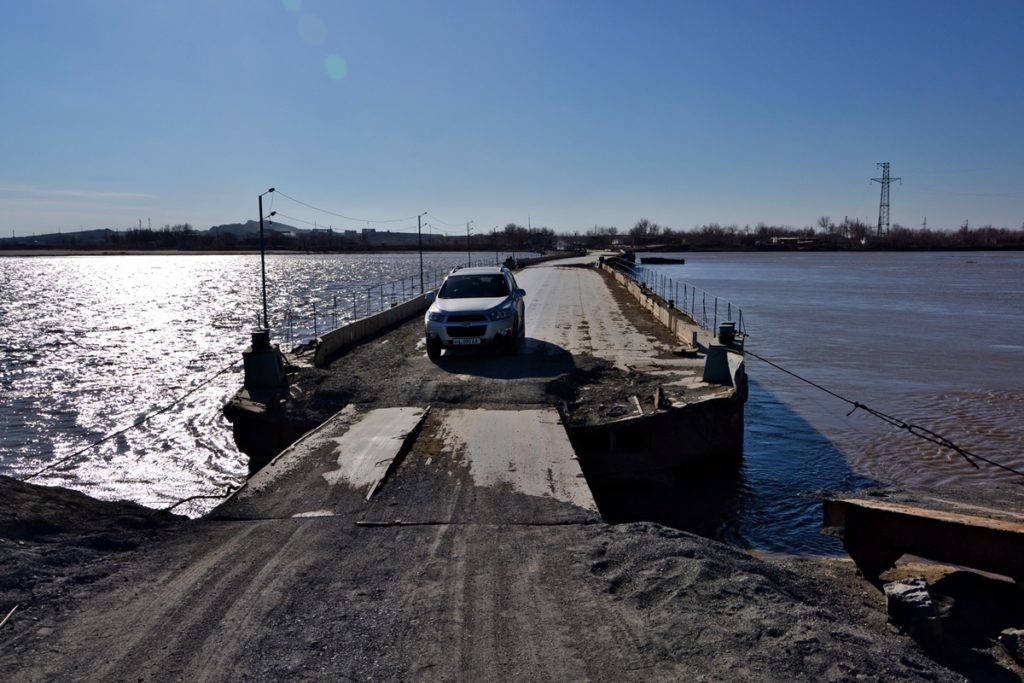
We were happy that we had a quite new rental car since there are a lot of old Ladas and Wolgas on the streets. Last time we have seen such old cars was on Cuba. Together with the old mud houses it felt like a journey in a time machine.
Our travel tips for Uzbekistan
How and where to get money in Uzbekistan – a VERY special experience 🙂
We started our exploration of Uzbekistan with changing money. The best way to do this in Uzbekistan is going to the market and not to withdraw from an ATM. Not sure whether we have at all seen an ATM… With “going to the market” we really mean a market stall where fruits and vegetables are sold and not a bank. All above, the black market rate is twice the official exchange rate.
We got ALL the money in 1,000 denomination bills what ended up with a heavy plastic bag full of money – like we were shopping on the market. The Uzbek 1,000 note is only worth about 15 cents. Consequently, paying with our 1,000 bills in the restaurants or fuel at the gas station is another story and especially very time-consuming counting the amount using only the small 1,000 Uzbek Soms bills. The Uzbek people are unbelievable fast in counting the money – for us it took us always several minutes…
Tashkent – the capital
We spent our first days in Uzbekistan in the capital Tashkent. An earthquake in 1966 destroyed many ancient buildings so that only a few buildings from the Soviet era can be found in Tashkent. The obvious signs from the Soviet era are large parks, wide roads and prefabricated high-rise houses. Moreover the Independence Square is crowned by a globe where formerly a huge Lenin statue was located. A short way from this place, additionally, the Timur Square is dominated by a statue of the adopted national hero on a horseback.
Metro in Tashkent
Wandering around in Tashkent, we have seen a lot of police on the streets. Consequently, it was hard for us to take pictures of the outside of the nice Soviet buildings and resulted several times in being stopped by the police, showing the pictures and – of course – deleting them. Moreover, Tashkent is very proud of its metro system and it is known for its Art Deco design but also here the police is present. Before going to the track, every bag is checked twice manually by the police. Unfortunately, It is against the law to take pictures from the metro station since the metro is considered as part of the strategic military infrastructure.
Samarkand – minus degrees and no heating
Registan
Samarkand is famous for the enormous Registan and listed by the UNESCO as an world heritage site (“Samarkand – Crossroad of Cultures“). The Registan forms the center of the old town with three madrasa (Islamic college) facing each other. Each of the madrasa has a unique and colorful mosaic geometric design that shines in the sun. It was also the commercial heart of the town in the 14th century with six roads running through the square and a connection with Timur’s citadel.
Shah-i Zinda
Besides this amazing architecture, Samarkand has in addition several other mosques, madrasa and mausoleums – each breathtaking in its own way. Especially the Shah-i Zinda with its blue-and-turquoise tiled collection of mausoleums and tombs. In addition, the Bibi Khaoum mosque in Samarkand is one of the tallest in the world.
Gur-E-Amir mausoleum
The Gur-E-Amir mausoleum has wonderfully decorated rooms inside with gold and geometric corners. Above all, we spend some time inside the mausoleums just stunning and being impressed of the design from the 15th century. The mausoleum is the final resting place of Timur’s male descendants.
Bukhara – UNESCO & our favorite city in Uzbekistan
We thought we have seen the most impressive sites from Uzbekistan in Samarkand but Bukhara is even more breathtaking (at least it was to us). The Historic Center of Bukhara, a UNESCO world heritage site, looks like the time stood still here the last hundreds of years. It felt like we are really on the ancient silk roads and camels will come around the next corner. It does not have one impressive site like a Registan in Samarkand but the ensemble of the old city with the simple mud houses, the car free sandy roads and the many colorful madrassas have caught us immediately. We spent the evening when we arrived in Bukhara and one full day walking through the streets and visiting numerous madrassas and covered market halls that populate Bukhara.
The experience we made in Myanmar that locals are asking us for pictures with them remained in Uzbekistan. We were favorite photo models…
Khiva and its UNESCO inner town Itchan Kala
The last stop on the ancient Silk Road before entering the Persian desert was Khiva. Its historic city with its Islamic architecture is remarkably preserved between the ten meters high city walls and also here it seems the time has stopped. The inner town is a UNESCO site called Itchan Kala. Khiva with its mosques, madrassas, mausoleums and markets as well as narrow sandy alleyways is a lovely place to wander around. In addition, try to imagine how the life might have been at the time of the Silk Road.
We can not get enough of the beautiful turquoise colored tiles which decorate the monuments and are in big contrast to the dust and sand surrounding the buildings. The first monument that has caught our eyes was the comparatively short but colorful minaret. The most probable theory is that the architect promised that the tallest minaret will be built in Bukhara and not in Khiva.
Karakalpakstan – a special region we will never forget
From Khiva we continued our tour through desert and Uzbek steppe towards the autonomous region Karakalpakstan in western Uzbekistan. Karakalpakstan was formerly an autonomous region in Russia before becoming a part of Uzbekistan in 1936. The region is now mostly desert due to the exploitation of the Amu and Syr Daryl rivers mainly for the cotton production and that consequently caused dehydration of the Aral Sea. It is estimated that less than 10% of the original size of the Aral Sea remains. Karakalpakstan means translated “black hat” what was the name of the tribes.
Moynak
Moynak is one of the big city in this region was half a century ago located at the shore of the Aral Sea and a proud fishing community. Today, the Aral Sea is more than 150 km away. Ships once floating in the sea are now standing and rusting in the dried out sea at the ship graveyard.
Termez – close to Afghan border and problems of finding a suitable hotel
Moynak and Nukus were the most western destinations on our tour. From here we drove back the complete route to Tashkent with some additional stops on our way for instance in Termez in the South of Uzbekistan.
Fayaz Tepe
Termez was a Buddhist center in the past and some ruins still remain. We visited Fayaz Tepe which consists of an old stupa and the ruins from a monastery. The ruins date back to the 2-3rd century. Long time ago that we have seen pagodas and stupas 😉
We are still not tired and in contrast we cannot get enough of the turquoise domes and colorful mosaics and therefore, the architecture and the decoration of the nearby mausoleum Sultan Saodat impressed us. In both, Fayaz Tepe and in the mausoleum, a local guide was waiting for tourists to explain the history. We were impressed by the enthusiasm both described the monuments and one gave us his address to send him the pictures via post we have taken with him.
Friendship Bridge
You might have heard about Termez as the base camp of the German army during the war in Afghanistan. The Soviet Union has built a bridge to get into Afghanistan and the same bridge was used by the Americans during the war. That bridge is ironically named Friendship Bridge. The border to Afghanistan is open and that’s the reason why we cannot show any pictures from the bridge.
Pictures from our route through Uzbekistan
On our route to Termez the landscape changed completely: colorful mountains and smooth hills were carrying us to our destination.
Shakhrisyabz – UNESCO & insider tip
On our route back to Samarkand and further to Tashkent we stopped in the UNESCO historic centre of Shakhrisyabz. This is the birthplace of Uzbekistan’s national hero Timur. The tombs and madrassas are smaller compared to those in Samarkand but not less beautiful.
Charvak
Finally, on our last day in Uzbekistan we drove from Tashkent further to the Charvak lake. The Charvak lake lies in the North at the edge of the Tian Shan mountains. Due to the dry winter, the lake has less water than usual but an amazing blue color. The road to the lake was pretty good but driving around the lake resulted in a bumpy adventure. Getting around means around 100 km but after approximately half of the way, the road was blocked. Consequently we had to turn and take he same way back.
Our very last day on our all around the world trip after eight months
Suddenly, we heard a whistling. Getting out of the car to check the tires has shown us the root cause: one of our tires was loosing air. In this situation, we remembered the words from our rental car company: “The car does not have any spare tire since you will not need it. The tires are unbreakable.” It seems the many holes on the streets and the gravel roads have killed one tire after our 4,000 km in Uzbekistan.
We stopped a car coming along the way to ask them whether they could take us to the next village to buy a new tire. The locals could not believe that a real Uzbek car does not have a spare tire. And they were right: they found one in the car! After changing the tire with their help, we continued our trip to the next auto service station. We experienced the Uzbek style handling a flat tire: repairing the flat tire within 15 minutes. And this for just converted 1,50 Euro.
Explore further countries:
Continue reading in the most popular blogs:
- Our travel packing list
- Slovenia and Austria travel tips
- Georgia travel tips
- New Zealand travel tips
- North Korea (DPRK) travel tips (DPRK)



